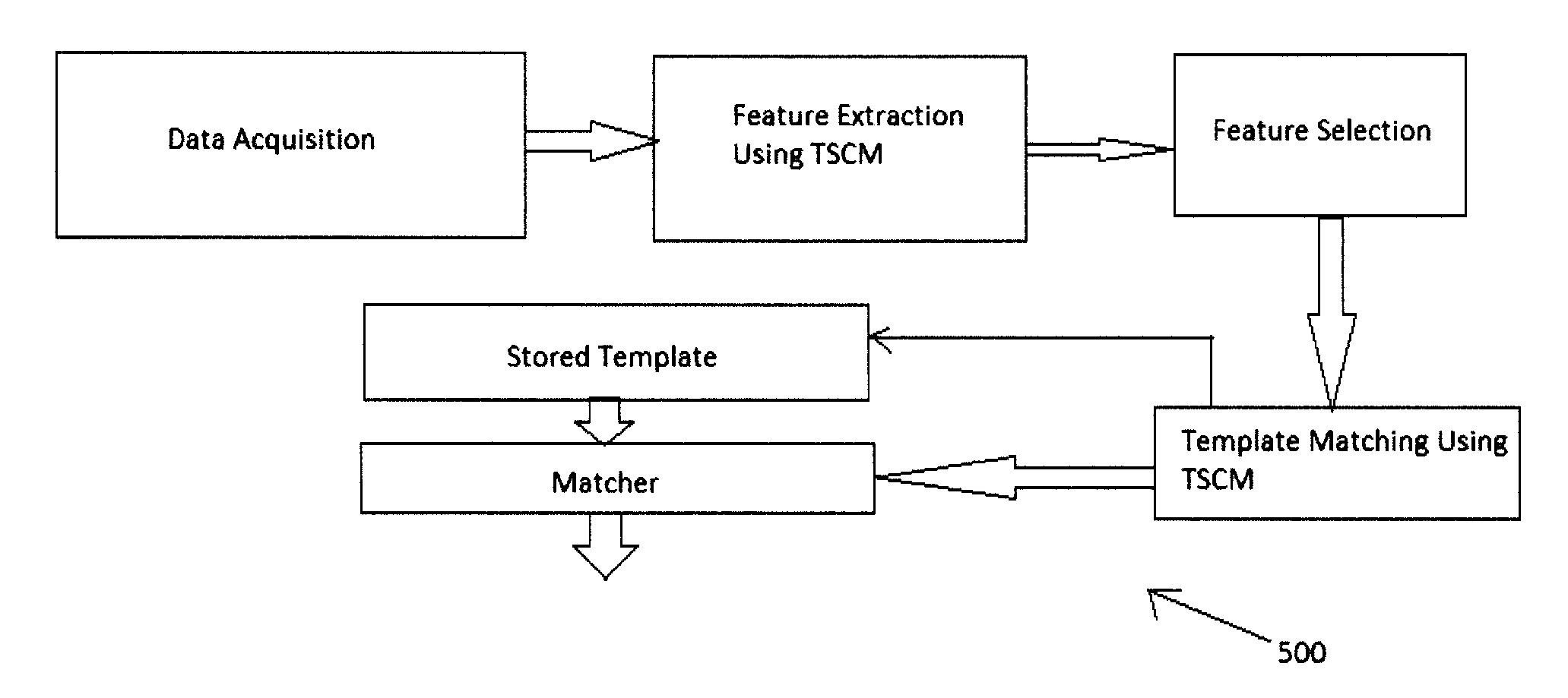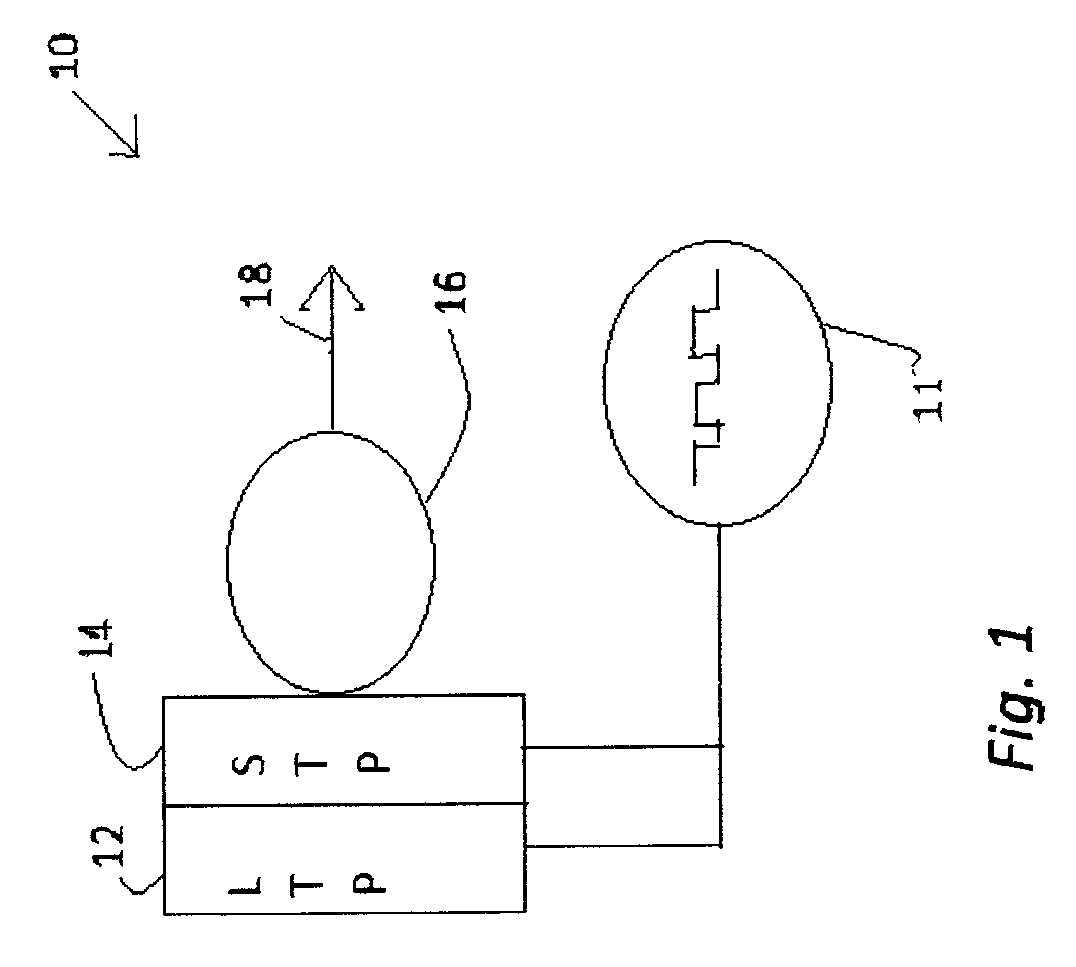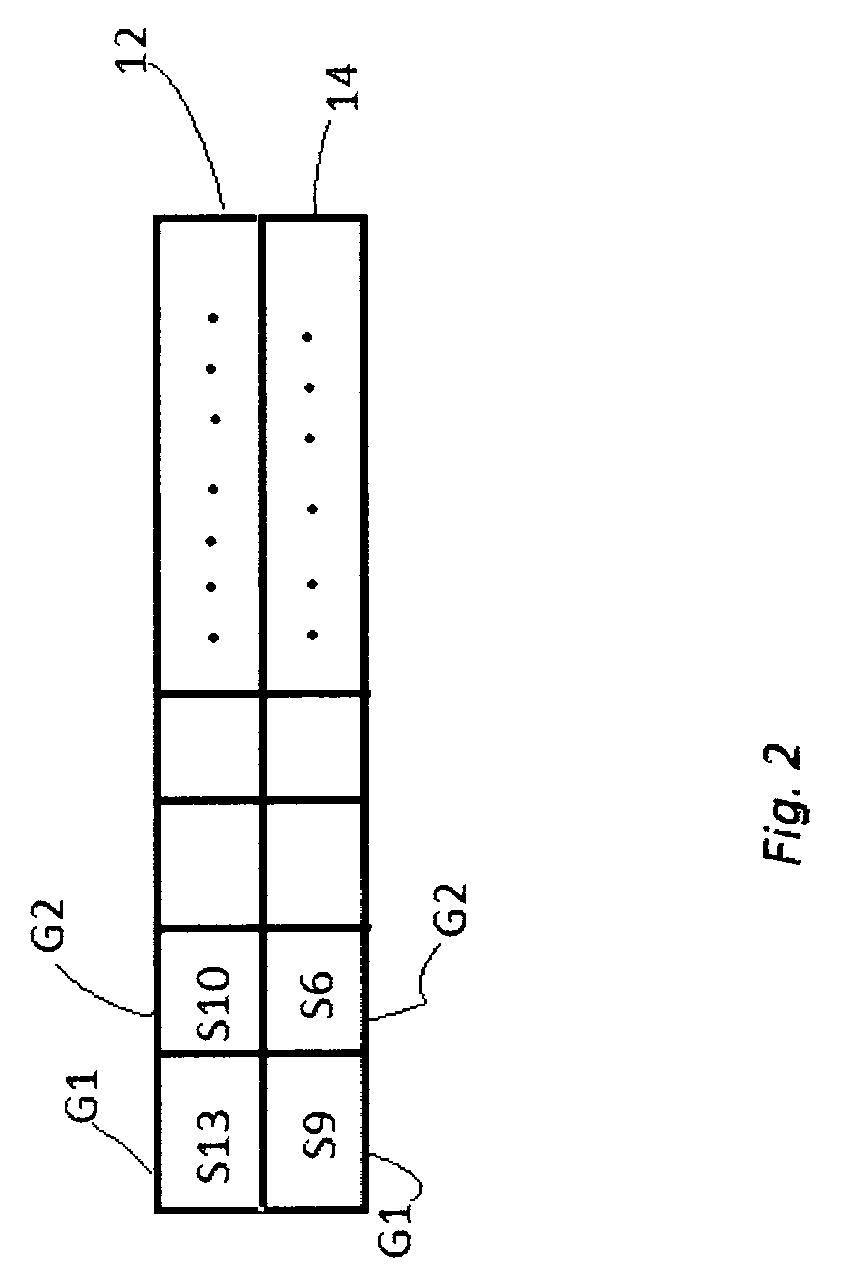Time series classifying memory, systems and methods
a time series and memory technology, applied in the field of time series classifying memory, can solve problems such as the inability to classify time series events
- Summary
- Abstract
- Description
- Claims
- Application Information
AI Technical Summary
Benefits of technology
Problems solved by technology
Method used
Image
Examples
Embodiment Construction
[0012]A time series classifying memory includes an enumerated group of synapses. Each synapse of the group has a junction including pre-synaptic emitters communicating with post synaptic receptors. A single pathway is input to each synapse of the group, and when innervated, stimulates the junctions. Each successive synapse has successively more post synaptic receptors according to a fixed ratio multiplied by the number of synaptic receptors in the previous synapse. At each junction, quanta of neurotransmitter emitted from the emitters bind with available receptors. When all the receptors at a junction have been bound, the junction goes refractory.
[0013]The synapse adjacent to the last junction to go refractory is marked. During a training mode the mark is a Long Term Potentiation (LTP) mark. During a live mode the mark is a Short Term Potentiation (STP) mark. The input is classified upon successful additive correlation of the LTP mark with the STP mark. A clock operable with synapti...
PUM
 Login to View More
Login to View More Abstract
Description
Claims
Application Information
 Login to View More
Login to View More - R&D
- Intellectual Property
- Life Sciences
- Materials
- Tech Scout
- Unparalleled Data Quality
- Higher Quality Content
- 60% Fewer Hallucinations
Browse by: Latest US Patents, China's latest patents, Technical Efficacy Thesaurus, Application Domain, Technology Topic, Popular Technical Reports.
© 2025 PatSnap. All rights reserved.Legal|Privacy policy|Modern Slavery Act Transparency Statement|Sitemap|About US| Contact US: help@patsnap.com



